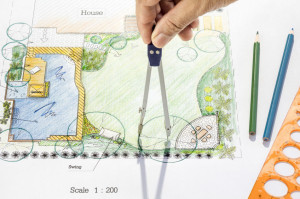 Landscape architecture pays. National studies, in fact, show that the return on investment in a development’s outdoor amenity space can be as high as 150 percent. This does not include the impact of energy costs and other lifespan savings that result from intelligent landscape architecture.
Landscape architecture pays. National studies, in fact, show that the return on investment in a development’s outdoor amenity space can be as high as 150 percent. This does not include the impact of energy costs and other lifespan savings that result from intelligent landscape architecture.
Landscape architecture adds value in a number of ways including perceived value as well as real property value. Several studies show that landscape architecture can add as much as 20 percent to the property value. Here’s how.
Perceived value
It’s often said that you only have one chance to make a good first impression. Landscape architecture becomes the first impression of passers-by, as well as potential tenant or buyers. It adds immediate sale and tenancy value by improving that first impression, or “curb appeal.”
Smart and creative landscape architecture helps a property stand out from all the others on the street. This boosts perceived value, which ultimately translates into higher property value and higher occupancy rates.
The American Society of Landscape Architects recommends investing at least 10 percent of mixed-use development value into landscape architecture.
Branding
Landscape architecture can support a building or a property development’s brand. That’s why it’s crucial that the landscape architecture be an integral part of the overall design of the whole property.
Energy savings
Intelligent landscape design has a profound impact on the energy use of a building and even a whole property development. Placing trees to provide shade can reduce the load on air conditioning in the warmer months, and block wind to reduce heating costs in the colder periods.
Traffic flow
Driveways, parking lots and walkways are essential parts of landscape architecture, and their design has a profound impact on how people experience the building or development. The design has to take into account the use of the building, the existing traffic flows, the desires of the owners and tenants, and uses of the property. It should also include accommodations for mobility-challenged users of the property, whether they’re owners, customers, tenants or visitors.
A well- designed landscape plan can help direct the flow of vehicles and pedestrians, improving the access to the building or the development, reducing congestion and risk of accidents.
High-return landscape design elements
- Shade features: Awnings, structures or trees and shrubbery help cool the outdoor areas and attract people to the property — a boon for retailers and residential projects.
- Seating areas: Benches, tables, picnic grounds for tenants or workers to eat lunch or take breaks add to the perceived value of any property, whether it’s commercial or residential.
- Water features: Pools and fountains not only add appeal, but help cool the area on hot days, and attract possible shoppers. In a residential development, water features are a major value boost for the area.
- Color: Flower beds, walkways, pavement materials, walls, fences — all these elements have color. Color can provide both harmony and contrast. Designs using living elements — plants and flower beds — can also change through the year, and from year to year. This makes the landscape architecture dynamic, providing new appeal from season to season and year after year. The result becomes new reasons to visit the property every season and every year.
- Native plants and trees: Choosing species of flowers, shrubs and trees that are native to the local environment means they’ll be better adapted to the local climate than exotic species. This reduces maintenance costs as well as the environmental impact risks.
Turn to professional landscape architects
Landscape architecture cannot be an afterthought — not if you want to realize the returns and benefits on the investment. Consult with our professional landscape architects before the design of your project is complete, so that the outdoor elements are integral to the overall design and provide a powerful return on investment.








